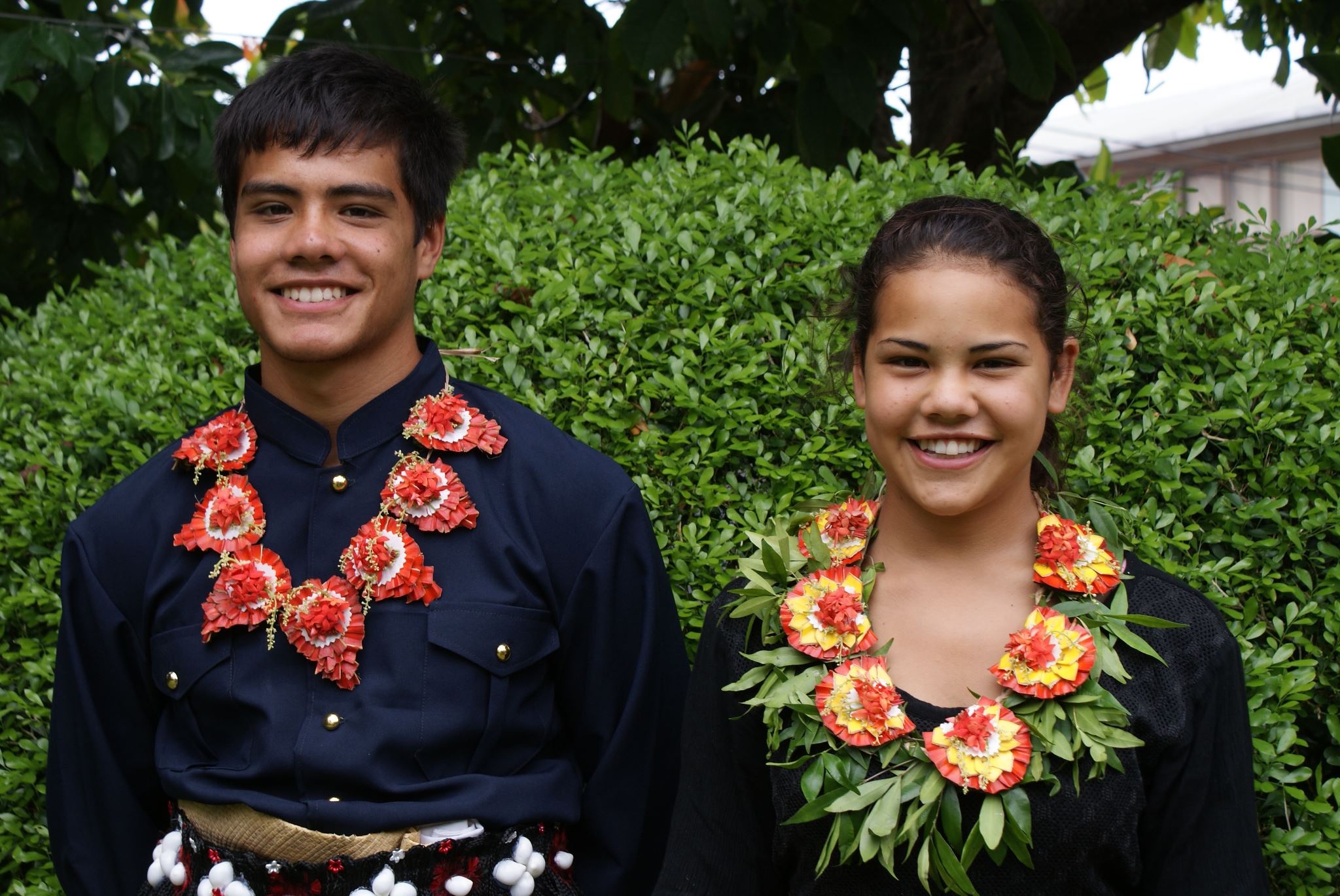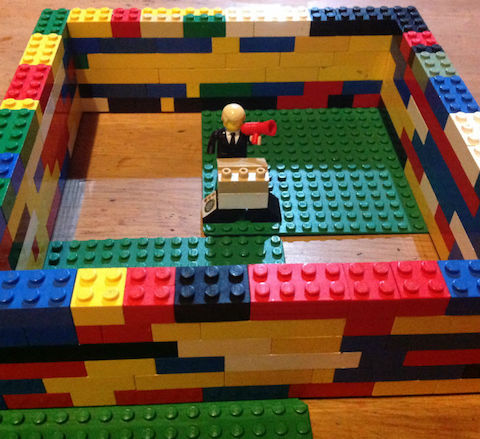
Identify learners from under-served groups.
From an early age, it is possible to identify gifted learners who have exceptional ability in relation to their peers. It is important that gifted learners have these abilities recognised and nurtured as early as possible, so they can be provided with appropriate support. It is also important to realise that the developmental nature of giftedness and talent means that many potential abilities may not be readily identifiable at an early age. This does not mean we should not attend to deliberate strategies to identify gifted behaviours in the early years but more that we should keep an open mind and a fluid approach to identification.
Some early indicators of giftedness are as follows:
The Giftedness in early childhood scale (Allan, 2002) provides a range of useful indicators of giftedness, purposefully designed and trialled for use in New Zealand early childhood settings. The scale uses a range of behavioural indicators of giftedness, organised into the following four broad areas:
Barbara Allan’s booklet Identifying and providing for giftedness in the early years (PDF, 1 MB) can be downloaded for personal use. Anyone wishing to republish the booklet must seek the permission of the author, editor and publisher.
While studies show that most gifted learners are at least as emotionally stable and socially competent as other learners of their age are, giftedness can have significant social and emotional effects for young learners. They may experience heightened sensitivity and awareness from an early age, which can be perceived as an ‘over-response’ to a given situation. They may be perfectionists, unhappy with any work that does not meet their own high standards and frustrated with the restraints of what their young body can physically manage compared with what their mind can envision. The mature interests and vocabulary of young gifted learners may make it difficult for them to develop friendships with their same-age peers, which is why many gifted learners are more comfortable interacting with older children or adults.
Understanding and empathy is needed to support young gifted learners. They will also benefit from regular opportunities to play, work and converse with others of like ability, who will better understand their interests and appreciate their sense of humour.
"A gifted child’s acute perception, heightened sensitivity and imaginative, abstract interpretation of events and interactions elicit intense emotional responses. Whether real or imagined, gifted children’s perceptions are their reality."
"Gifted young children may appear as hyperactive, disruptive, noisy, dramatic, hugely excited but also quiet, shy, extremely tearful, deeply saddened at times, depending on their temperament, their environment and the emotional state they are in."

Dean, J. (2011).
Westerbeke, L. (2014).
Delaune, A. (2016).
Chellapan, L. & Margrain, V. (2013).
Margrain V. G., (2005)
Wong, M. (2015). Wong, M. (2015).
Radue, L. (2009).
Delaune , A., & Tapper, L. (2015).
Breen, S. (2008). Signs of giftedness in early childhood – how to cater for gifted children in ECC
PDF, 260.45 KBSocial and emotional issues of gifted young children. Sampson, C. (2013).
PDF, 433.50 KBHarrison, C. (1995). Giftedness in early childhood. Sydney: Ku Childrens Services.
Margrain, V., Murphy, C., & Dean, J. (2015). Giftedness in the early years: Informing, learning and teaching. Wellington: NZCER Press.
Narrow methods of identification have often led to gifted Māori, NZ-born Pasifika and immigrant learners being overlooked and under-served in educational settings. The culturally responsive learning environment is a sound basis for identifying gifted students from diverse cultural backgrounds. Within this approach, rich, stimulating and culturally relevant experiences support all learners to develop their gifts and talents – and help teachers to recognise them.
In a culturally responsive context, teachers could incorporate traditional Māori approaches to identifying giftedness. One such approach is described by Bevan-Brown (2009):
Tohunga (experts) often required youngsters to prove themselves before they were entrusted with valued knowledge and skills. This involved giving the person snippets of information to see what they would do with it. If their consequent actions showed they had the interest, ability, motivation and respect deemed necessary, then they were tutored and nurtured in the area concerned.
"Strength lies in differences not similarities."
"We need diversity of thought in the world to face the new challenges."
"Just as the natural environment depends on biodiversity, the human environment depends on cultural diversity, because no one civilisation encompasses all the spiritual, ethical and artistic expressions of mankind."
"In line with common stereotypes, more girls than boys, and more New Zealand European girls were classified as gifted by intervention teachers than was warranted by their achievement. There were also more gifted Māori and Pasifika girls who were potentially impacted by inaccurate, lowered teacher expectations of their reading achievement levels."

Macfarlane, A. (Ed. & project leader). (2010).
Scobie-Jennings, E. (2013).
Miller, G. O. (2015).
Faaea-Semeatu, T. (2011).
Frengley-Vaipuna, I. (2007).
Bevan-Brown, J. M. (2009).
Harris, C. (1993).
Macfarlane, A., Webber, M., Cookson-Cox, C., & McRae, H. (2014).
Cohen, L. M. (1990).
Frengley-Vaipuna, I. Kupu-MacIntyre, L., & Riley, T. (2011).
Macfarlane, A. & Moltzen, R. (2005).
Identification of gifted Māori students. Bevan-Brown, J. & Niederer, K. (2012).
DOCX, 29.41 KBIndicators of giftedness in Māori - cultural abilities and qualities. Bevan-Brown, J. (2012).
DOCX, 31.42 KBMana Tu, Mana Ora - Identifying characteristics of Māori giftedness. Mahaki, C., Mahaki P., White S.,(2007).
PDF, 1.00 MBMāori Profiles of the Gifted and Talented. Table adapted by B. Trenwith. (2011).
DOCX, 40.03 KBRevised profiles of the gifted and talented. Neihart (2010).
PDF, 210.34 KBSamoan concepts of giftedness and talent. Fuamatu, J. (2008).
DOC, 58.00 KBTranslating theory into practice: One school’s approach to identifying Māori gifted and talented learners. Scobie-Jennings, E. (2015).
PDF, 859.49 KBMiller, G. O. (2012). Presentation at Giftedness Unfurled: National Gifted Conference, Wellington.
Webber, M. (2015). The eight qualities of successful intelligence in gifted Māori students.
Linda Silverman first recognised this particular type of learner when some highly gifted children demonstrated phenomenal abilities to solve items that were presented to them visually or required excellent abilities to visualise. These children were also adept at spatial tasks, such as orientation problems.
Most children who thrive in classrooms are auditory sequential learners. However, visual-spatial learners tend to think in pictures rather than words and learn better in this mode. They do not learn from repetition and drill and do not learn well through the sequential step-by-step methods commonly used by educators. They are the ‘big picture’ thinkers and need to see the ‘whole’ before they can learn the ‘parts’. They are ‘gestalt, aha learners’ who do not respond well to orderly progressions of concepts and ideas. They are usually disorganised and miss details, whereas teachers may stress organisation and attention to detail. They are highly aware of space but pay little attention to time, whereas schools and classrooms may have rigid time schedules. While they often find organisation and sequencing very difficult, they are often highly creative and artistic, with an aesthetic strength.
Common traits include:
"These are the creative leaders of society. We need to protect their differences in childhood and enable them to develop their unique talents in supportive environments at home and at school."
"Children who learn differently —and perhaps better—have skills that may be more important than the usual."
"There are children everywhere who are unable to tell the steps to a solution, yet are able to solve the problem correctly."
"What I notice about people who are gifted in filmmaking is that they’re great thinkers. They engage with big ideas and they engage with people."
Spatial learners often excel at activities such as Lego, computer games, model building, art or music. Any skill in which these young people experience success should be encouraged and nurtured. Their skills, interests and hobbies may lead to careers in adult life.

Silverman, L. K. (August, 1999).
Silverman L.K. and Freed, J. N. (1991). Reprinted from Issue No. 4 of The Dyslexic Reader.
Silverman, L. K. (2005).
Underachievement is a serious issue for many gifted learners (Moltzen, 2004, p. 371). In some instances, these learners are very skilful at masking their true ability and may achieve to a level that is not likely to cause concern on the part of teachers. While it may be relatively easy to obtain information on a learner’s performance at school, finding an indicator of his or her true ability can be much more difficult. A responsive and learner-centred learning environment, in which there are varied opportunities to achieve and it is ‘safe’ to achieve, make it more likely that this true ability will be demonstrated.
Teachers need to be aware of the characteristics associated with underachievement in gifted learners. A key indicator can be evidence of a significant discrepancy in performance across areas that require similar knowledge or skills. Checklists and teacher observation scales are helpful in increasing the validity and reliability of teacher observation. Parents, whānau and peers can help to identify the potential of this group of learners. Evidence of high achievement outside the kura/school/ECE setting/Kāhui Ako (e.g., at church or in a cultural or sporting group) can offer teachers an insight into the real ability of a learner.
The identification and remediation of seriously underachieving gifted learners are notoriously difficult. Barbara Clark (1997) reviewed 15 years of research and created the following checklist for recognising underachievers:
Davidson Academy 2021
Reasons Why Gifted Children Sometimes Underachieve. White, S. (2001).
PDF, 227.92 KBClark, B. (2002). Growing up gifted: Developing the potential of children at home and at school. Upper Saddle River, N.J: Merrill/Prentice Hall.
Ford, D., Alber, S., & Heward, W. (2005). p159 – 168 in Johnson, S.K. and Kendrick, J. Teaching strategies in Gifted Education, Waco, Texas: Prufrock Press.
Moltzen., R. (2004). Underachievement. In D. McAlpine and R. Moltzen (Eds), Gifted and talented New Zealand perspectives (2nd ed.). Palmerston North: Kanuka Grove Press.
Gifted learners from economically disadvantaged backgrounds can be difficult to identify and are consistently under-represented in programmes for the gifted and talented. Since the performance of these learners generally declines the longer they are at kura/school (by comparison with learners from more advantaged backgrounds), it is critically important to identify them as early as possible. Attention should focus on early childhood education and on junior schooling.
Traditional identification methods, such as teacher nomination, tend to be ineffective for this group of learners. The accuracy of teacher identification can be increased with the use of checklists designed specifically for identifying disadvantaged gifted learners. Peer nominations have proved promising, particularly where peers identify areas of special ability outside the classroom, such as in art, music, sport, manaakitanga and leadership.
The responsive learning environment approach has been particularly valuable for this group of learners. When coupled with early identification and intervention, it is usually the most effective method of education for them.
Davidson, J. (2007). Sabbatical Report
Ballam, N. D. (2015). ‘Defying the odds’: Gifted and talented young people from low socioeconomic backgrounds. In Inquire, Inspire 2015: A Tauranga research symposium, Windermere Campus, Bay of Plenty Polytechnic, Tauranga, New Zealand.
Ballam, N. (2016). Risk and resilience in gifted young people from low socioeconomic backgrounds. In Australian Association for the Education of the Gifted and Talented (AAEGT) National Gifted Conference: Beyond the Boundaries in Gifted Education. Conference held at University of New South Wales, Sydney, Australia.
To sir, with love: Messages for educators from gifted financially disadvantaged young people. Ballam, N. D. (2016). Australasian Journal of Gifted Education, 25(1), 5–17.